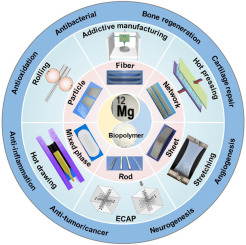
A Biodegradable Innovation: Korean Researchers Create Robust, Eco-Friendly Substitute for Nylon
In a groundbreaking advancement for sustainable materials, scientists from South Korea have introduced a cutting-edge polymer that decomposes in the ocean while maintaining strength and heat resistance comparable to traditional nylon. Featured in the March 2025 edition of Advanced Materials, this development could drastically lessen plastic waste linked to synthetic fabrics and fishing equipment—without necessitating major changes to existing manufacturing processes.
Addressing the Ocean Plastic Challenge
Our oceans are inundated with plastic, where abandoned fishing gear and synthetic textile fibers rank among the most enduring contaminants. Nylon, essential to ropes, garments, and fishing nets, can take decades to disintegrate in marine settings, breaking down into microplastics that taint aquatic ecosystems and food webs.
Until now, alternatives to biodegradable plastics have lacked the durability required for demanding applications like fishing lines, industrial fabrics, or heat-resistant apparel. However, a research team at the Korea Research Institute of Chemical Technology (KRICT), spearheaded by Dr. Hyun-Yeol Jeon and Dr. Hyo-Jeong Kim, has crafted a promising answer.
Their creation, an innovative polyester-amide (PEA) polymer, merges the advantages of both worlds: biodegradable ester linkages and robust, nylon-like amide connections. This distinctive composition allows the material to break down in natural ocean conditions while preserving essential performance capabilities.
“A significant milestone is that this material surpasses the drawbacks of standard biodegradable plastics while providing nylon-level functionality,” noted Dr. Sungbae Park, senior researcher and co-first author of the study.
Exceptional Performance With Swift Biodegradation
This bio-nylon substitute showcases remarkable mechanical traits, making it fit for roles that typically depend on performance plastics:
– Tensile strength reaching 110 MPa—exceeding that of nylon 6 and polyethylene terephthalate (PET)
– Capable of enduring ironing at temperatures up to 150°C
– A single fiber strand can bear a 10-kilogram load without breaking
– Marine biodegradation rate of 92.1% in under a year (whereas PLA measures at 0.1%, PBS at 35.9%, and PBAT at 21.1%)
– Carbon emissions cut down to one-third of those from standard nylon production
These attributes position this PEA polymer in a distinctive category: robust enough to meet contemporary demands while being environmentally considerate for ocean life.
Manufacturing Made Simple—and Safer
An outstanding feature of this breakthrough is its alignment with existing manufacturing frameworks. Enhancing established polyester production techniques, the researchers devised a two-step melt polymerization process that eliminates hazardous organic solvents, thereby enhancing both safety and sustainability.
Even more encouraging, the method can be integrated into current polyester production lines with only slight adjustments. The KRICT team has already successfully increased production to 4 kilograms in a 10-liter pilot reactor, indicating preparedness for commercial rollout.
“The innovation extends beyond the polymer itself,” stated Dr. Jeon. “It also involves making global implementation feasible.”
Sustainably Sourced and Designed for Circular Economy
The sustainability narrative continues beyond performance and end-of-life biodegradability. The components of the polymer are derived from renewable and recycled sources:
– Long-chain dicarboxylic acids sourced from castor oil, a non-edible plant that does not vie with food production
– Caprolactam derivatives extracted from discarded nylon 6 waste
This upcycling strategy significantly lowers carbon emissions—down to only 2.3–2.6 kg CO₂-equivalents per kilogram of material. This represents nearly a 75% decrease compared to the 8–11 kg CO₂eq/kg generally related to nylon manufacturing.
Field Testing Demonstrates Genuine Potential
While many biodegradable plastics undergo laboratory testing only, the Korean research group expanded their horizons by assessing their material in real marine conditions in Pohang, South Korea. These experiments confirmed the polymer’s biodegradability in saltwater settings and its durability against natural challenges like temperature fluctuations, UV exposure, and salinity.
This practical approach reinforces confidence that the material can endure everyday situations and then return to nature without harm. In fishing and textile uses, where resilience and environmental effect intersect, this PEA polymer offers an effective and scalable solution.
A Global Leap Toward Cleaner Oceans
With commercialization anticipated as soon as 2027, the new polymer emerges at a crucial time. Worldwide awareness of microplastic pollution and its disastrous effects on marine ecosystems and human health is prompting industries to seek sustainable options that do not sacrifice performance.
The research was bolstered by collaboration among prominent South Korean institutions, including Inha University and Sogang University, along with support from the Ministry of Trade, Industry and Energy, the Ministry of Agriculture, Food and Rural Affairs, and KRICT’s fundamental research initiative.
“This technology signifies a crucial advancement toward the commercialization of biodegradable engineering plastics.